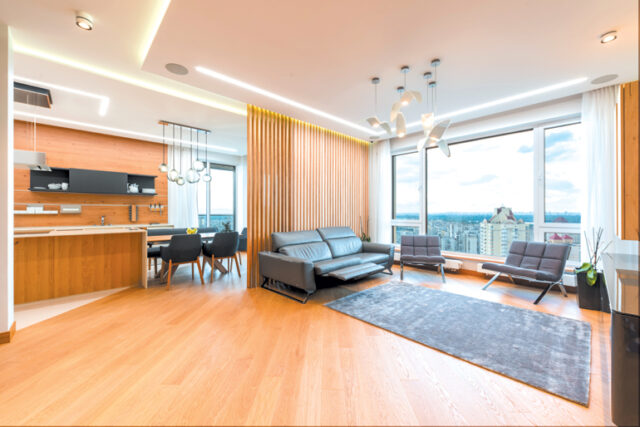By Luisa Maria Jacinta C. Jocson, Reporter
ALMOST 68 million people in developing Asia were pushed into extreme poverty last year, as many people struggled with the impact of the coronavirus pandemic and rising cost of living, the Asian Development Bank (ADB) said.
“Compared to pre-pandemic estimates for 2022, an extra 67.8 million people were estimated to be extremely poor in developing Asia in 2022,” the ADB said in the latest Key Indicators for Asia and the Pacific report released on Thursday.
The report looks at developing Asia’s progress in achieving Sustainable Development Goal (SDG) 1, which is to end poverty in all its forms everywhere by 2030.
Data from the ADB report showed 3% of the Philippine population was living in extreme poverty in 2021, lower than 6.5% in 2015. Extreme poverty is defined as living on less than $2.15 (P122) a day based on 2017 purchasing power parity figures.
The report also showed 17.8% of the Philippine population was living in moderate poverty (or less than $3.65 a day), lower than 27.1% in 2015.
The ADB said developing Asia’s progress in reducing poverty has been hampered by the COVID-19 pandemic and further aggravated by the cost-of-living crisis caused by elevated inflation.
“Previous forecasts based on available data hinted that the COVID-19 pandemic initially set back progress in reducing poverty in developing Asia by at least two years,” ADB Statistician Arturo Martinez, Jr. said in a webinar.
Last year, inflation in developing Asia accelerated to 4.4%, which the ADB said is a “level unseen in almost a decade.” In 15 economies, food and nonalcoholic drink prices rose by at least 10% while fuel prices were up by at least 8%.
“Cost of living pressures also rose across the region as prices of food, energy and housing hit all-time highs as 2022 unfolded. This stalled developing Asia’s economic performance which only managed to grow by 4.2% by the end of the year, lower than initial forecasts suggested,” it added.
Elevated commodity prices have devalued real wages and generated “longer-term poverty traps,” the ADB said.
Based on the 2017 purchasing power parity (PPP), rates of extreme and moderate poverty in developing Asia were estimated at 3.9% and 18.8%, respectively, in 2022.
“Based on medium-term growth projections, developing Asia may be able to reduce prevalence of extreme poverty to 1% by 2030, however, 8% may still live in moderate poverty, and another 30% in economic vulnerability,” Mr. Martinez said.
To eradicate poverty, achieve zero hunger and build human capabilities, the Asia and Pacific region must spend over $669 billion annually from 2016 to 2030.
IMPACT ON THE POOR
The poor are usually the most affected by the rising cost of living. The ADB noted that even small movements in prices hurt poor people as they spend a significant amount on basic items such as food and energy.
“In most economies, the bottom 50% spent more than half their budget on food and 10% more on energy than an average household,” it said.
Low-income groups are also finding it more challenging to recover from the pandemic.
“Those who just escaped from poverty could be pushed back into it due to reduced purchasing power. Poor people are most likely to be hit hardest due to the higher share of energy and food costs in their budget compared with other income groups,” the ADB said.
Poor people also face a “poverty premium” as they usually have to pay more for certain goods and services.
“Even if we take the increased cost of living out of the equation, it’s quite expensive to be poor because they may incur poverty premiums. Poor people pay more to get access to basic services,” Mr. Martinez said.
For example, the ABD noted that poor people “may end up paying higher unit prices for select food items because they cannot afford to buy in bulk, because they have limited facilities to store food at home.”
The poor also have less access to affordable financial services. “In developing Asia, access to credit for small firms, which provide a major source of employment for people of lower incomes, is constrained due to unfavorable interest rates, complex application procedures, and high collateral requirements.”
POVERTY IN PHILIPPINES
Mr. Martinez said sustained Philippine economic growth can support the further reduction of poverty levels.
In the Philippines, the proportion of the population living below the national poverty line was at 18.1% in 2021. The government is targeting to reduce its poverty incidence rate to 9% by 2028.
“Based on currently available data, growth in the Philippines is one of the highest in the region and is expected to contribute positively in further reducing poverty if it can be sustained in the long-run and if the country can ensure that the benefits of economic growth will trickle down to low-income people,” he said in an e-mail to BusinessWorld.
The ADB currently estimates the economy’s GDP to grow by 6% in 2023 and 6.2% in 2024. The ADB will release updated forecasts next month.
“However, in addition to reducing poverty, it is also important to amplify the resilience of Filipinos. Bringing poor people just above the poverty line may not be enough if they can be easily pushed back below it if another crisis hits,” Mr. Martinez said.
The government should include better social protection coverage and programs that address inequality as part of its strategies to reduce poverty, he added.
In 2020, only 36.7% of the Philippine population was found to be covered by one social protection benefit.
According to the ADB, the bottom 30% of Philippine households faced higher prices for transport-related goods and services compared with the general population at the height of the pandemic-induced lockdowns in 2020.
“Deficiencies in access to basic services, particularly in rural areas where a significant number of poor people live, need to be addressed,” Mr. Martinez added.
The ADB also said that technology and innovation can help reduce poverty, especially in supporting financial inclusion.
“Over the years, developing Asia has lifted their rates of financial inclusion but there is a need to close the gap between men and women in select areas,” Mr. Martinez said.
Agricultural productivity is also key to helping the region reduce poverty and achieve zero hunger.
“Policy measures such as boosting development of the agriculture sector and strengthening the resilience of agricultural households to price shocks and other types of disruptions can be a powerful tool for facilitating faster poverty reduction,” the ADB added.
Mr. Martinez also noted that governments should invest in education for the poor, as poverty can force individuals to prioritize meeting their basic needs instead of going to school.













